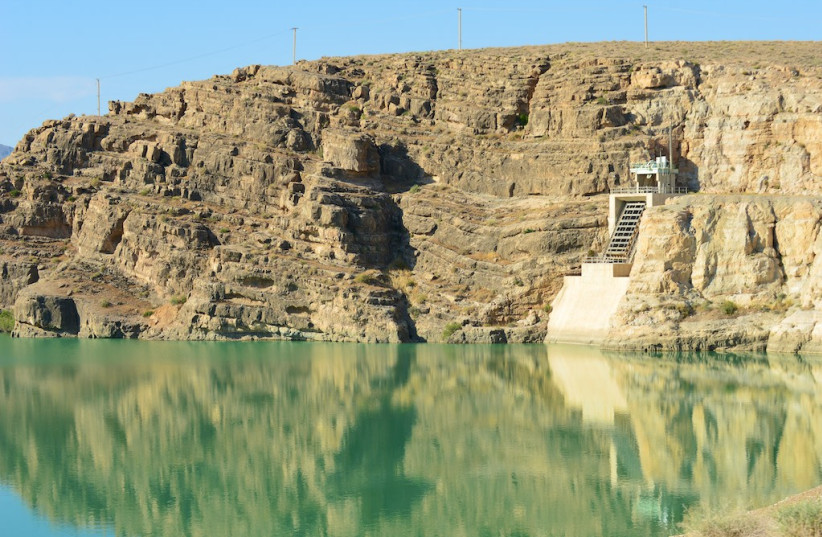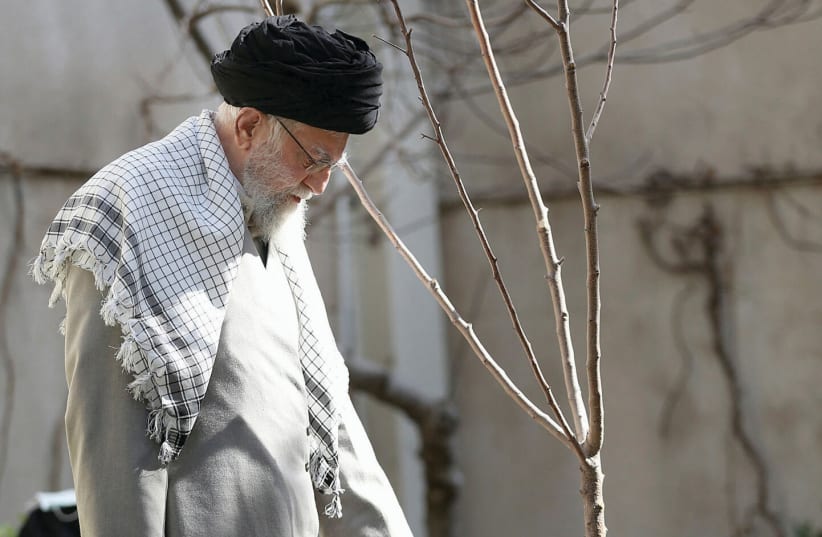The escalating effects of climate change and increasing temperatures have intensified the focus on Iran’s water crisis, particularly concerning its domestic impact and the ensuing socio-political turmoil. However, the implications of this crisis on Iran’s relations with its two key neighbors, Iraq and Afghanistan, often remain minimally addressed or entirely overlooked in these discussions.
The water crisis in Iran is severe, exacerbated by climate change, water mismanagement, and increasing temperatures. The situation is particularly critical in the southern provinces of Sistan and Baluchestan and Khuzestan in the southwest of Iran, where extreme heat combined with dwindling water resources is causing significant hardship. The crisis, which experts describe as “water bankruptcy,” stems from poor water management policies that have led to overconsumption and resource depletion.
The government’s failure to address the issue has led to increasing discontent among Iranians, inciting public protests, and escalating socio-political instability. Many rural inhabitants are unable to afford store-bought or trucked-in water. In some areas, authorities warn of complete exhaustion of municipal water by September.
The domestic landscape of Iran’s escalating water crisis is undoubtedly grim. However, it is crucial to recognize that this issue extends beyond Iran’s borders and carries the potential for escalating tensions with its neighbors, Iraq and Afghanistan, given the existing water disputes and the absence of any formal riparian law to guide resolution.
The wider regional impact of Iran's water crisis
In order to address domestic water shortages, Iran has undertaken an extensive dam-building initiative to reroute water from the Arvand, Karkheh, Karun, and Sirwan rivers to other drought-prone provinces across the country. The government refers to these projects, which involve the construction of 109 small dams, as “modern” irrigation strategies, aimed at mitigating the impact of the water crisis within the country.


However, this policy of limiting the outflow from the Arvand, Karkheh, and Karun rivers into Iraq has substantially aggravated the water scarcity crisis in southern Iraq. This has severely impacted the supply of drinking water and disrupted the agricultural irrigation systems in Iraq.
Iran has also been digging canals around the Bahmanshir river, a tributary to the Shatt al-Arab river. This has caused the Thalweg line, which defines the border between Iran and Iraq, to be extended to about two kilometers toward Iraq. These issues have also resulted in some of Iraq’s massive oil facilities extending into Iranian territory. Artificially altering this border can lead to a conflict not only over the borders and access to the Shatt-al-Arab, but also to pollution of Iraq’s water supply.
Iran has also obstructed significant water supplies from the Sirwan, Alvand and Little Zab rivers, originating from the Zagros Mountains. These rivers are the principal sources of livelihood for nearly two million people in the Kurdistan Region of Iraq (KRI), making the situation critical for the inhabitants. Iran has constructed 16 dams on the Sirwan river, among them the Daryan dam in Kermanshah province, and built the 47 km.-long Nawsud water tunnel associated with the dam, to divert the water to other Iranian cities that would otherwise flow to the KRI. The construction of the Daryan dam and Nawsud tunnel is poised to heavily impact Halabjah governorate in KRI, which depends entirely on the river for its drinking water, as well as its agriculture and fishing industries.
Iran’s dam-building on the Sirwan River has further implications for Iraq. The project jeopardizes the near-completion of the $173 million Halabjah-Sirwan drinking water project. Moreover, it threatens the Darbandikhan Dam’s ability to generate hydroelectric power and support irrigation, and impacts fishing, farming, and groundwater usage, with notable effects in Halabjah governorate and Central Iraq. Furthermore, it will alter the region’s biodiversity and climate, particularly in the KRI’s Sharazur area. Finally, and most importantly, the dam would disrupt peaceful coexistence among different religious sects, as it could be perceived as Shiite-Islamic Republic withholding water from Sunni-majority KRI.
Simultaneously, a similar water conflict is unfolding on Iran’s eastern front with Afghanistan over the water of the Helmand River. The dispute over the Helmand River, which flows from the mountains of the Hindu Kush through Afghanistan into southeastern Iran, dates back to the 1940s and 1950s, when Afghanistan built the Kajaki, Kamal Khan, Selma, and Grishk dams on the river that curtailed the water flow into Iran. The river is an essential source of water for millions of people on both sides of the border critical to agriculture, fishing, and human consumption.
The dispute primarily stems from the absence of a mutually agreed-upon riparian law between the two nations. Although Afghanistan and Iran signed the Helmand-River Water Treaty (HRWT) in 1973, agreeing that Iran would receive a share of 26 cubic meters per second from the Kajaki dam, the treaty was neither ratified nor implemented. Fast forward to February 2021, a new agreement was inked based on the HRWT terms, but disputes over dams remained unresolved. In March 2021, the Kajaki Dam was completed and Afghan officials announced they would cease permitting additional water to flow to Iran, a decision materialized in May 2023.
This led to the Taliban government cutting off the water flow to Iran, resulting in a stark decline in water levels and subsequent drying up of the Hamoun Wetland in Iran’s Sistan and Baluchestan province. Iran accuses the Taliban of violating the HRWT by restricting the river’s flow, an allegation the Taliban dismiss, claiming the Helmand River lacks sufficient water due to the shortage of rainfall. Ebrahim Raisi, the Islamic Republic’s president, warned the Taliban about disregarding Iran’s water rights. In response, a Taliban official mocked Raisi in a video, offering him a gallon of water from the river and saying, “Take this and don’t attack us! We’re terrified!” The Taliban’s mocking gesture is a clear sign of reluctance on the Afghan side to engage in discussions with Iran over the use of the Helmand and Harirud rivers.
The outlook for transboundary water cooperation between Iran and Iraq appears bleak, with water resource management complications potentially driving Iran to disregard Iraq’s interests entirely. If this scenario unfolds, a major conflict over water between the two countries may be imminent. Prospects for cross-border water collaboration between the Taliban-led Afghanistan and Iran are equally pessimistic, signaling potential future conflict.
The writer is a senior fellow at the Philos Project.
